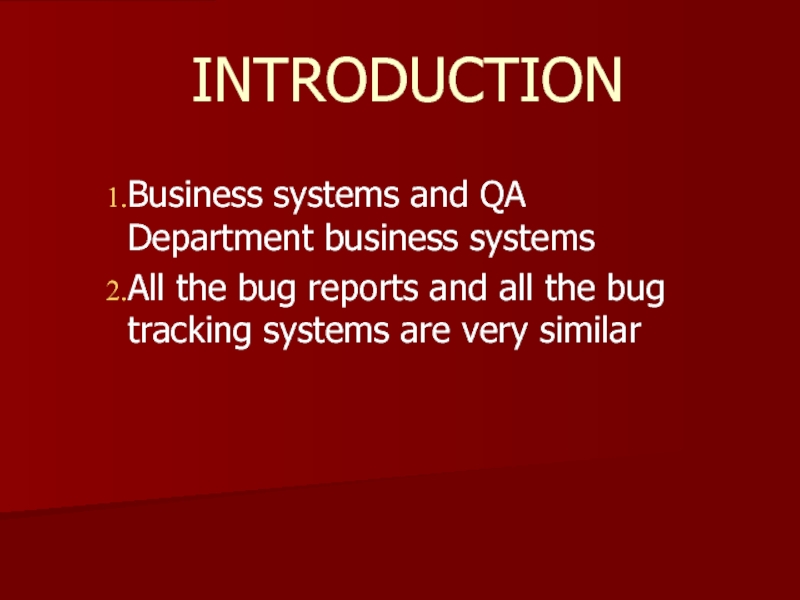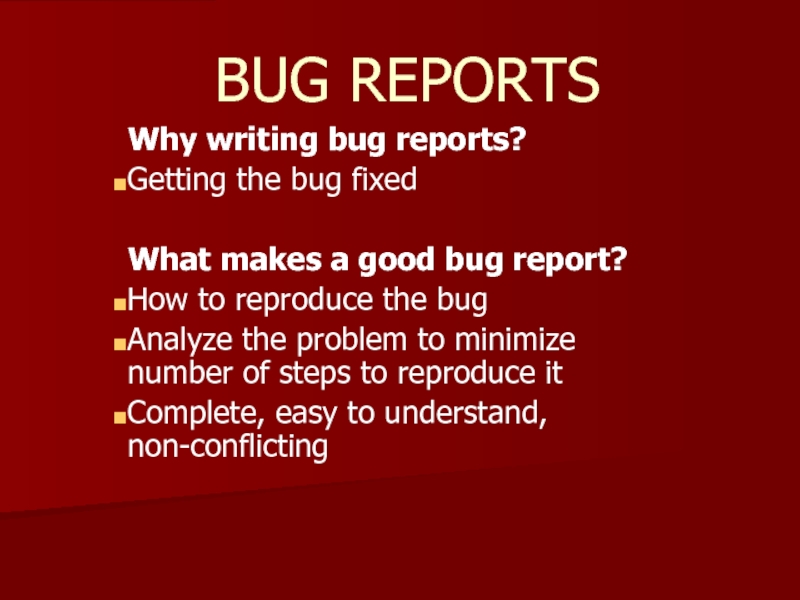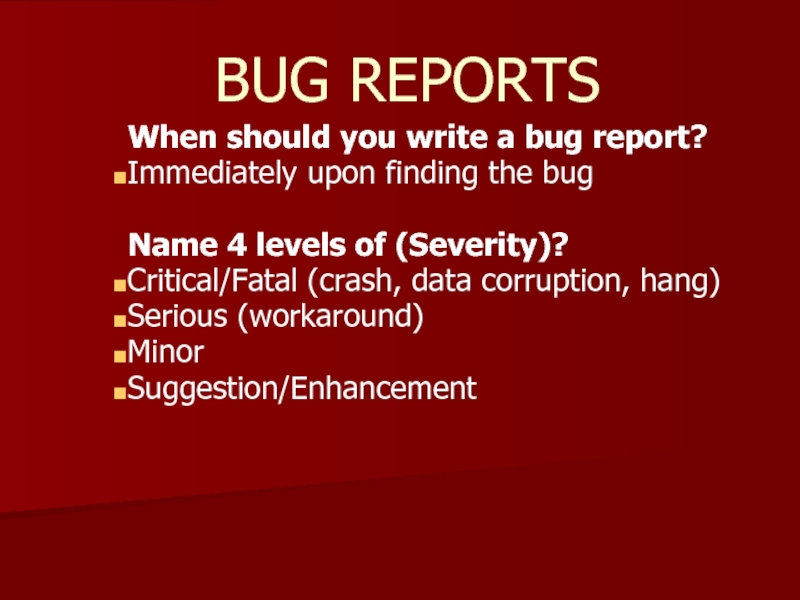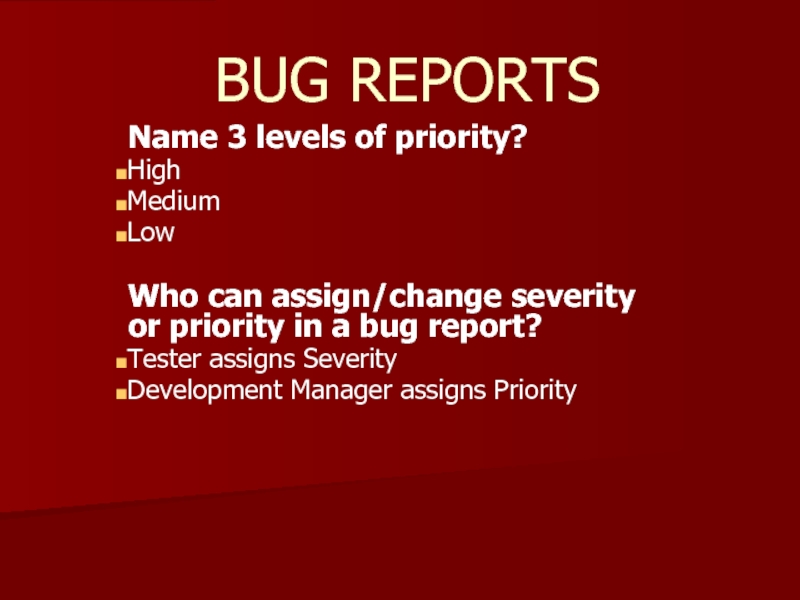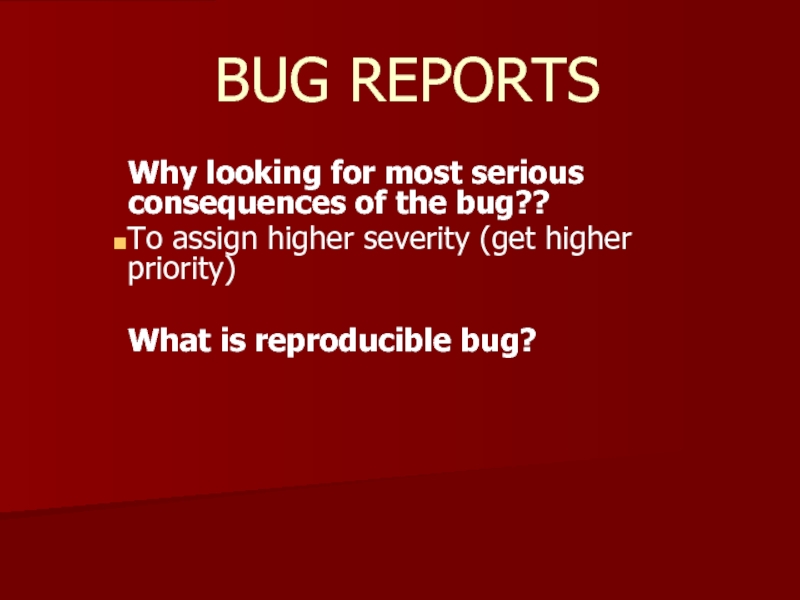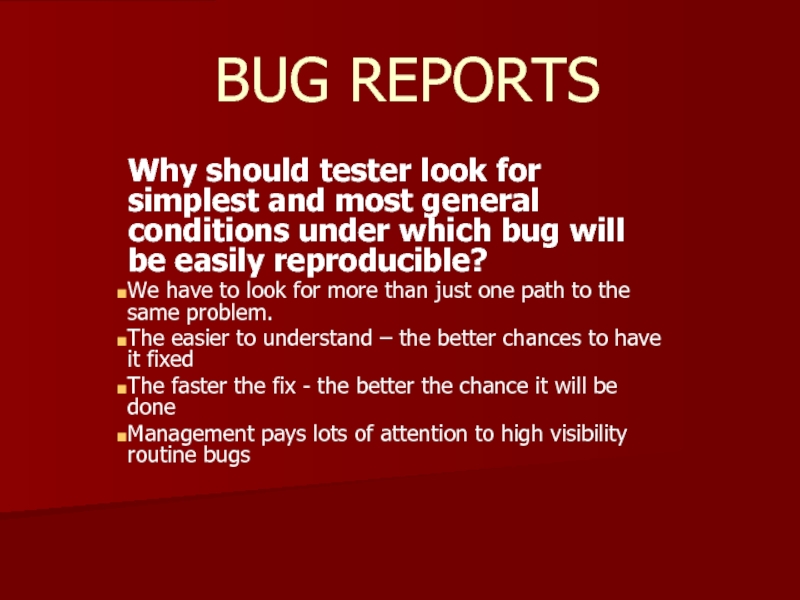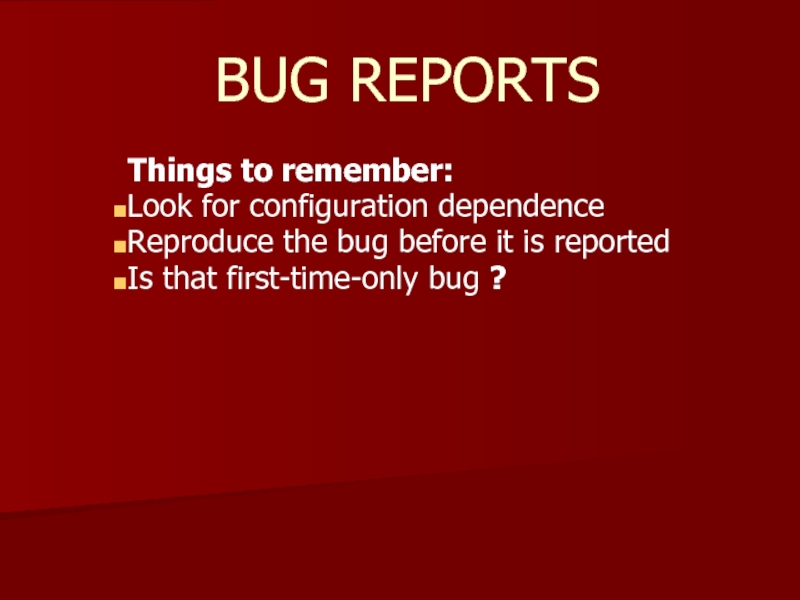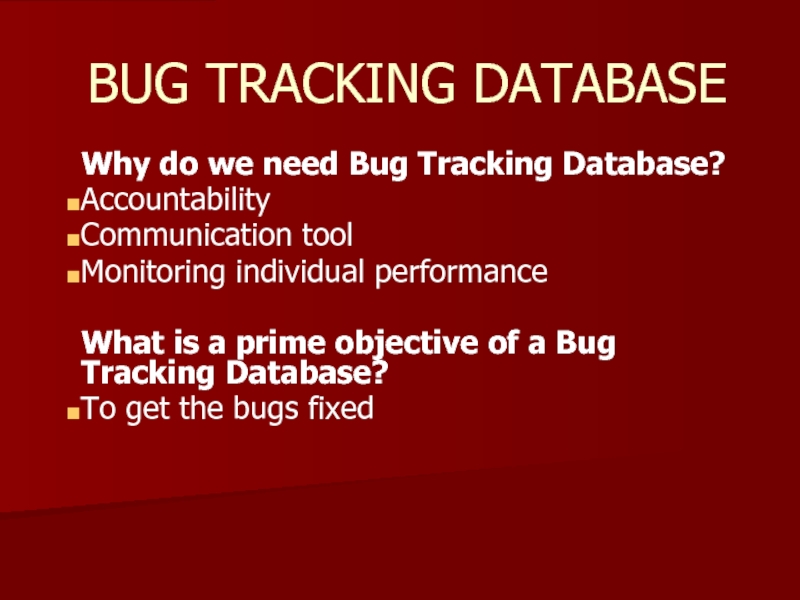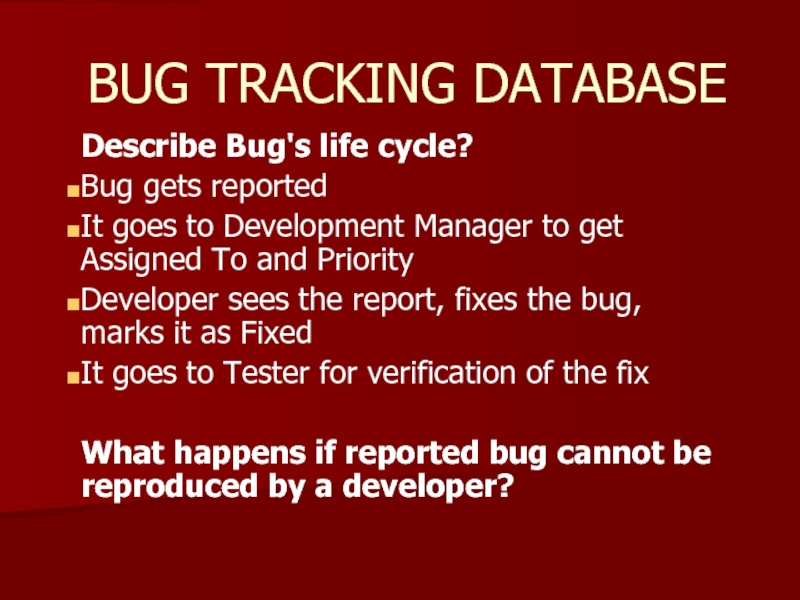all the bug tracking systems are very similar
- Главная
- Разное
- Дизайн
- Бизнес и предпринимательство
- Аналитика
- Образование
- Развлечения
- Красота и здоровье
- Финансы
- Государство
- Путешествия
- Спорт
- Недвижимость
- Армия
- Графика
- Культурология
- Еда и кулинария
- Лингвистика
- Английский язык
- Астрономия
- Алгебра
- Биология
- География
- Детские презентации
- Информатика
- История
- Литература
- Маркетинг
- Математика
- Медицина
- Менеджмент
- Музыка
- МХК
- Немецкий язык
- ОБЖ
- Обществознание
- Окружающий мир
- Педагогика
- Русский язык
- Технология
- Физика
- Философия
- Химия
- Шаблоны, картинки для презентаций
- Экология
- Экономика
- Юриспруденция
Business systems and QA. Department business systems презентация
Содержание
- 1. Business systems and QA. Department business systems
- 2. BUG REPORTS Why writing bug reports? Getting
- 3. BUG REPORTS When should you write a
- 4. BUG REPORTS Name 3 levels of priority?
- 5. BUG REPORTS Why looking for most
- 6. BUG REPORTS Why should tester look for
- 7. BUG REPORTS Things to remember: Look for
- 8. BUG TRACKING DATABASE Why do we need
- 9. BUG TRACKING DATABASE Describe Bug's life cycle?
Слайд 2BUG REPORTS
Why writing bug reports?
Getting the bug fixed
What makes a good
bug report?
How to reproduce the bug
Analyze the problem to minimize number of steps to reproduce it
Complete, easy to understand, non-conflicting
How to reproduce the bug
Analyze the problem to minimize number of steps to reproduce it
Complete, easy to understand, non-conflicting
Слайд 3BUG REPORTS
When should you write a bug report?
Immediately upon finding
the bug
Name 4 levels of (Severity)?
Critical/Fatal (crash, data corruption, hang)
Serious (workaround)
Minor
Suggestion/Enhancement
Name 4 levels of (Severity)?
Critical/Fatal (crash, data corruption, hang)
Serious (workaround)
Minor
Suggestion/Enhancement
Слайд 4BUG REPORTS
Name 3 levels of priority?
High
Medium
Low
Who can assign/change severity or priority
in a bug report?
Tester assigns Severity
Development Manager assigns Priority
Tester assigns Severity
Development Manager assigns Priority
Слайд 5BUG REPORTS
Why looking for most serious consequences of the bug??
To assign
higher severity (get higher priority)
What is reproducible bug?
What is reproducible bug?
Слайд 6BUG REPORTS
Why should tester look for simplest and most general conditions
under which bug will be easily reproducible?
We have to look for more than just one path to the same problem.
The easier to understand – the better chances to have it fixed
The faster the fix - the better the chance it will be done
Management pays lots of attention to high visibility routine bugs
We have to look for more than just one path to the same problem.
The easier to understand – the better chances to have it fixed
The faster the fix - the better the chance it will be done
Management pays lots of attention to high visibility routine bugs
Слайд 7BUG REPORTS
Things to remember:
Look for configuration dependence
Reproduce the bug before it
is reported
Is that first-time-only bug ?
Is that first-time-only bug ?
Слайд 8BUG TRACKING DATABASE
Why do we need Bug Tracking Database?
Accountability
Communication tool
Monitoring individual
performance
What is a prime objective of a Bug Tracking Database?
To get the bugs fixed
What is a prime objective of a Bug Tracking Database?
To get the bugs fixed
Слайд 9BUG TRACKING DATABASE
Describe Bug's life cycle?
Bug gets reported
It goes to Development
Manager to get Assigned To and Priority
Developer sees the report, fixes the bug, marks it as Fixed
It goes to Tester for verification of the fix
What happens if reported bug cannot be reproduced by a developer?
Developer sees the report, fixes the bug, marks it as Fixed
It goes to Tester for verification of the fix
What happens if reported bug cannot be reproduced by a developer?
